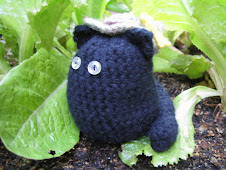
These cornstalks didn't produce many ears, but they would have made a nice decoration bundled up and tied and surrounded by pumpkins.
I'm an urban farmer, devoid of acres of land, so I make do by having several gardens at different sites, one of which is in the back yard of my father-in-laws house. I had a crop of corn growing that just didn't materialize. The growth was stunted, and the ears were just not good enough to pick. Sad, but it happens sometimes. I was ready to clear them out and had a thought. Why not bundle them up and save them to give away as Halloween and autumn decorations. It's hard to find bundles of dried cornstalks here in the city. So, I bundled them up with twine by size. I had some very cute bundles ranging in size from 2 to 6 feet tall. They still had some small ears of corn on them that I thought would look nice once everything dried out. I thought the smaller bundles would make nice centerpieces for the holiday table. I left them out to dry and decided to go over and take some pictures of them today.
Imagine my disappointment when I found they were gone! Every one of them. Did someone come by and take them? I'm still shaking my head in disappointment. Now, I can't even post a picture to remember them by.








